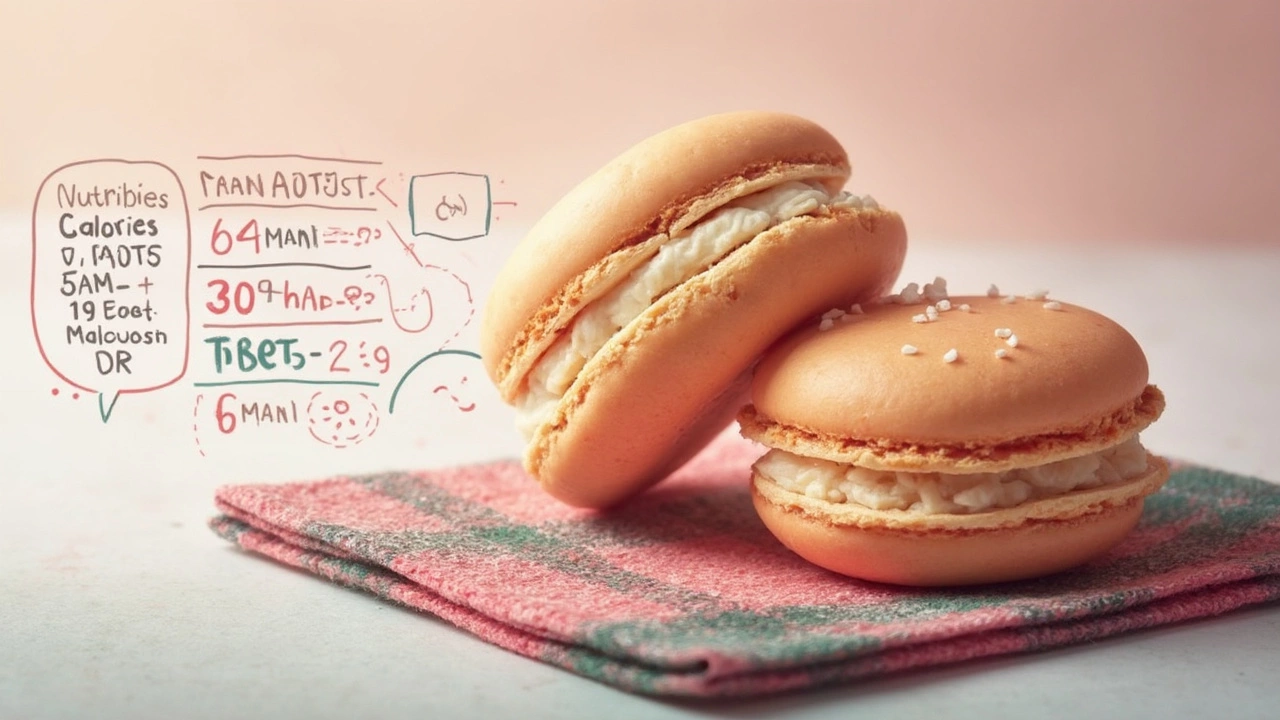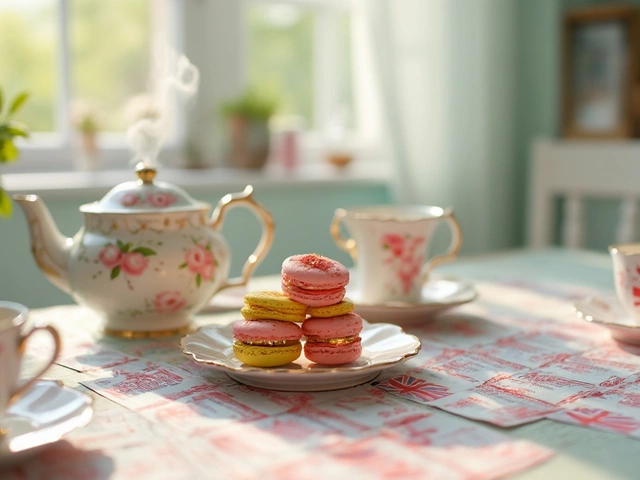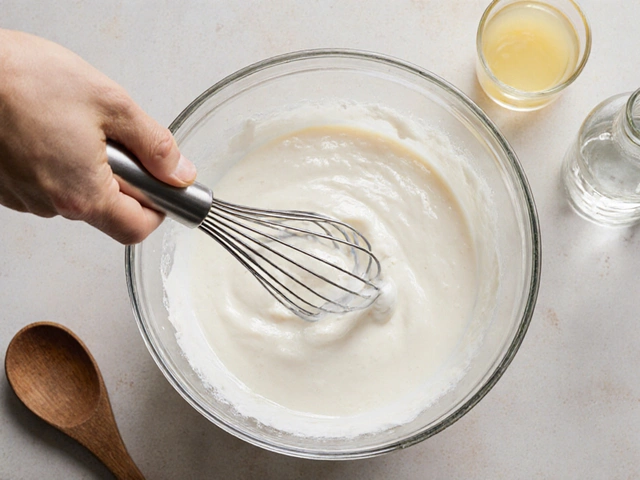
Ever bitten into a macaron and thought, "This little candy-colored circle can’t possibly be much, right?" It’s hard to resist the pastel parade behind bakery glass—rows of raspberry pink, lemon yellow, and pistachio green singing some siren song. But if you’re counting calories or just curious about what’s in that delicate shell, it gets interesting fast. When it comes to macarons, size definitely deceives. They may be light as air, but there’s more happening inside than meets the eye or the palate. Sugar, almonds, and sometimes a surprise inside: that’s the macaron way. But how do those ingredients add up when it’s time to tally calories?
The Breakdown: What’s in a Macaron?
Let’s pull apart that perfect bite. Macarons are a simple bunch at heart, made from almond flour, powdered sugar, egg whites, and granulated sugar for the shells. Then there’s the filling—everything from ganache to buttercream to fruit jams finds its way between those shells. And that means two things: variety and calories. For the classic French macaron (about 10-12 grams each), here’s a basic breakdown of ingredients:
- Almond flour for structure and that nutty flavor
- Powdered sugar is the backbone for sweetness
- Egg whites, whipped into peaks, keep things pillowy
- Granulated sugar stabilizes the meringue and sweetens some more
- Your choice of colorful fillings: buttercream, chocolate ganache, jam
It’s easy to see how this petite treat packs a lot. Almond flour means it isn’t exactly bread-like—it comes with healthy fats and protein. The sugar, though, is a given: this isn’t something from the health food aisle. Want numbers? Below is a table showing the average calorie range of a standard macaron:
| Macaron Flavor | Calories (per piece) |
|---|---|
| Classic Vanilla | 70 |
| Chocolate Ganache | 90 |
| Pistachio | 80 |
| Raspberry | 72 |
| Lemon | 75 |
So, that means one sweet macaron has around 70-100 calories, depending on its filling and size. Fancy bakeries sometimes super-size their treats, which can land you closer to 120-150 calories per piece, especially if the filling is something creamy. Read those bakery signs carefully, or ask when you order—some will gladly give you a calorie estimate.
How Size and Ingredients Change the Calorie Count
A tiny bite, but calories can stack up if you’re not paying attention. I’ve noticed bakery macarons in Paris (where I once dragged my husband Alaric through the rain for half a dozen pistachio varieties) tend to be on the smaller side. Commercial ones, like the kind in big-box freezers, sometimes go larger and sweeter. Homemade? It really depends on your hand at piping and what you stash inside the filling.
Let’s look at some simple variables:
- Size of the macaron shell: bigger shells mean more almond flour and sugar
- Filling thickness: more buttercream or ganache = more calories
- Type of filling used: ganache and buttercream are the heaviest, while fruit jam or curd tends to be lighter
- Special add-ins: Chocolate chips, candied peels, or nuts in the filling can drive things up
Sometimes I’ll make a batch at home and swap out half the buttercream filling for a lower-calorie fruit jam—pretty, tasty, and shaves off at least 10 calories per cookie. Store-bought and bakery-made? Plan on the higher side since they lean heavy on both creamy fillings and bigger shells for paid drama factor. If you want to experiment at home, try reducing the sugar in the meringue by 10%—the texture holds, the flavor is still dreamy, and you cut a touch from the calorie count. Just don’t go too wild: macarons are famously finicky, and mess with the chemistry too much, and the shells get chewy or flat. It’s a delicate balancing act, but worth trying if you’re on a calorie hunt.

Sweet Macarons vs. Other Desserts: Calorie Showdown
Curious how macarons stack up next to other treats? Let’s pit them against chocolate chip cookies and cupcakes, two standard options. Grab a single, standard bakery macaron, and you’re sitting somewhere between 70 and 100 calories. Compare that to a regular chocolate chip cookie, which typically lands around 150-200 calories, or a bakery cupcake that can soar from 250 to even 450 calories depending on frosting and fillings. Not so scary if you’re going for just one or two macarons!
| Dessert | Average Calories (per piece) |
|---|---|
| Classic French Macaron | 75 |
| Chocolate Chip Cookie | 170 |
| Cupcake (with icing) | 320 |
| Shortbread Cookie | 120 |
| Mini Cheesecake Bite | 90 |
If you’re at a party or splurging on dessert, the portion control is built right in—one or two macarons are usually enough to satisfy. That’s probably one reason they’re such a hit at weddings or fancy galas—you can try a bunch of flavors without loading up too fast. But don’t let the petite size trick you: three or four add up quickly, especially with the richer, nut-based fillings. Spread them through the day if you want to savor (and maybe feel a bit less guilty about the indulgence; that’s my move!).
Macarons and Nutrition: Breaking Down the Nittty-Gritty
Nutritionally, macarons are a funny thing. You mostly get calories from sugar and fat. Almond flour does offer trace minerals—think magnesium and vitamin E, a bit of fiber, and protein. One standard macaron has roughly:
- 3–4g fat (mainly from ground almonds and any butter in the filling)
- 7–10g carbs (nearly all from sugars)
- 1g protein
They’re naturally gluten-free since almond flour replaces wheat, which is great if you’re gluten sensitive or have celiac disease. But for anyone watching added sugars, this isn’t something that fits a strict diet often. Macarons don’t offer much micronutrient value—their bright colors come from food coloring, not antioxidants. You won’t find a significant chunk of fiber here either: there’s maybe 0.2g per macaron, not enough to call it healthy.
Compare that to a piece of dark chocolate (around 50 calories, with antioxidants and some fiber), or a bowl of berries (about 60 calories for a whole cup, high in vitamins). This isn’t to talk down macarons—they’re a treat, not a staple—but if you’re aiming for something nutritious, keep the tiny portion size firmly in mind. Want a tip? Pair your macaron with a cup of black coffee or unsweetened green tea. The bitterness contrasts sweet, and you get your dessert moment with little calorie impact besides the macaron itself. It’s classic French café style and saves any temptation to chase it with more sweets.

Tips for Enjoying Macarons without Calorie Overload
Who wants to obsess over every morsel at a party or during a lazy afternoon treat? You don’t have to. Here’s how I balance my sweet tooth (I have one as big as the Eiffel Tower) with common sense:
- Savor slowly: Eat your macaron in small bites, chew, and let the flavors play out. It honestly feels like more treat with less actual sugar frenzy.
- Stick with lighter fillings: Fruit curd, jam, or even whipped egg white fillings carry fewer calories than dense buttercream or chocolate ganache. If you’re shopping, ask or look for flavor guides.
- Make your own: Swapping 20% of the icing sugar in shells for a natural sweetener (stevia or monk fruit, for instance) reduces calories and leaves the texture intact. Just keep the swaps minor, so you don’t lose the true macaron magic.
- Pair with no-calorie drinks: Black coffee and unsweetened teas are your friend. Skip sweet lattes or creamy hot chocolate that add an extra 200+ calories with every cup.
- Consider sharing: Two flavors in half pieces let you sample more while eating less. Friends appreciate it, too—it invites conversation and taste testing, which is really the whole point of fancy desserts, isn’t it?
I rarely say no to an occasion—birthdays, anniversaries, or just a gray Wednesday afternoon that needs brightening. But I do try to avoid the “it’s small so I can have six” trap. Three macarons go past 200 calories, and that’s not nothing. I like to think the French art of enjoying a little, with a lot of style, is the best lesson to carry away.
So, the next time you spot a macaron—whether it’s a classic rose flavor from a downtown bakery or a bright blue birthday batch at a friend’s party—you know what you’re getting. Think flavor, color, and a sweet little calorie bomb that’s best enjoyed with slow savoring and maybe a touch of Parisian spirit. Who cares if you’re not in a patisserie on the Champs-Élysées? Life’s too short not to enjoy tiny desserts with big personality.








Write a comment